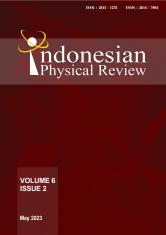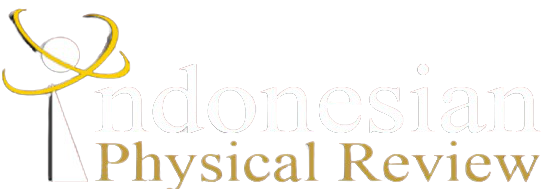SPATIOTEMPORAL DISTRIBUTION OF THE CONGLOMERATE RESERVOIR JATIBARANG FORMATION, MELANDONG FIELD, NORTH-WEST JAVA BASIN, INDONESIA
DOI:
10.29303/ipr.v6i2.234Downloads
Abstract
Subsurface mapping of the distribution of the reservoir is essential to be conducted in order to minimize many risks such as financial losses and also to increase profit from hydrocarbon production. This research was conducted on the Jatibarang conglomerate reservoir in Melandong Field, North West Java Basin, Indonesia. There are three objectives of this study which are to perform elastic impedance (EI) seismic inversion using available 3D seismic data, to determine the most suitable elastic impedance angle for the data, and to map spatiotemporal distribution of the Jatibarang Formation reservoir in the Melandong field, North West Java basin, Indonesia. EI inversion was selected for this study using the inversion angle ranging from the near stack (5º-15º) to the far stack (20º-30º). Results from this study show that EI seismic inversion can help in detecting the distribution of the lithology and hydrocarbon within the target zone. Angle 5º is considered as the best EI angle for the studied data as indicated by a correlation value of 0.65. Moreover, EI angles 15º and 10º are less reliable as shown by their correlation value of 0.6 and 0.56, respectively. These results are expected to provide some new insights into the distribution of the Jatibarang reservoir, and help in exploration, exploitation, and development of oil and gas fields in Melandong Field, North West Java Basin, Indonesia.
Keywords:
Reservoir distribution; Jatibarang Formation; conglomerate; Inversion Seismic; Elastic ImpedanceReferences
M. G. Bishop, “Petroleum System of The Northwest Java Province, Java and Offshore Southeast Sumatra, Indonesia,†USGS Numbered Series, 99 – 50, Apr. 01, 2000.
S. Martodjojo, Evolusi Cekungan Bogor. Bandung, ITB Press, 2003.
Pertamina, “Laporan Geologi Regionalâ€, PT Pertamina EP Region Jawa, 2003.
Paradigm, Rock and Fluid Canvas, Epos 3rd edition, 2007.
P. Connolly, Elastic Impedance. The Leading Edge, 438-452, 1999.
K. Aki and P. G. Richards, Quantitative seismology, theory and methods. Vol I and II. W.H. San Fransisco, Freeman, 1980.
A. Canning, Introduction to AVO Theory. Paradigm Geophysical, 2000.
M. Rider, The Geological Interpretation of Well Logs, Second Edition. Scotland, Rider-French Consulting, 2002.
O. Serra and L. Serra, Well Logging and Geology. Serralog, 2003.
J. H. Doveton, Principles of Mathematical Petrophysics. Oxford University Press, 2014.
O. Y. Adesanya, L. Adeoti, K. F. Oyedele, I. P. Afinotan, T. Oyeniram, and S. Alli, “Hydrocarbon reservoir delineation using simultaneous and elastic impedance inversions in Niger Delta field,†Journal of Petroleum Exploration and Production Technology, vol. 11, pp. 2891-2904, 2021.
M. R. Adhari, “The application of Lamda-Mu-Rho seismic inversion for conglomerate reservoir characterization in Melandong Field, Northwest Java Basin,†Journal of Aceh Physics Society, vol. 5(1), pp. 6-8. 2016.
S. P. Maurya, “Estimating elastic impedance from seismic inversion method: a study from Nova Scotia field, Canada,†Current Science, vol. 116 (4), pp. 628 – 635. 2019.
License

This work is licensed under a Creative Commons Attribution-NonCommercial-ShareAlike 4.0 International License.
Authors who publish with Indonesian Physical Review Journal, agree to the following terms:
- Authors retain copyright and grant the journal right of first publication with the work simultaneously licensed under a Creative Commons Attribution-ShareAlike 4.0 International Licence (CC BY SA-4.0). This license allows authors to use all articles, data sets, graphics, and appendices in data mining applications, search engines, web sites, blogs, and other platforms by providing an appropriate reference. The journal allows the author(s) to hold the copyright without restrictions and will retain publishing rights without restrictions.
- Authors are able to enter into separate, additional contractual arrangements for the non-exclusive distribution of the journal's published version of the work (e.g., post it to an institutional repository or publish it in a book), with an acknowledgment of its initial publication in Indonesian Physical Review Journal.
- Authors are permitted and encouraged to post their work online (e.g., in institutional repositories or on their website) prior to and during the submission process, as it can lead to productive exchanges, as well as earlier and greater citation of published work (See The Effect of Open Access).





